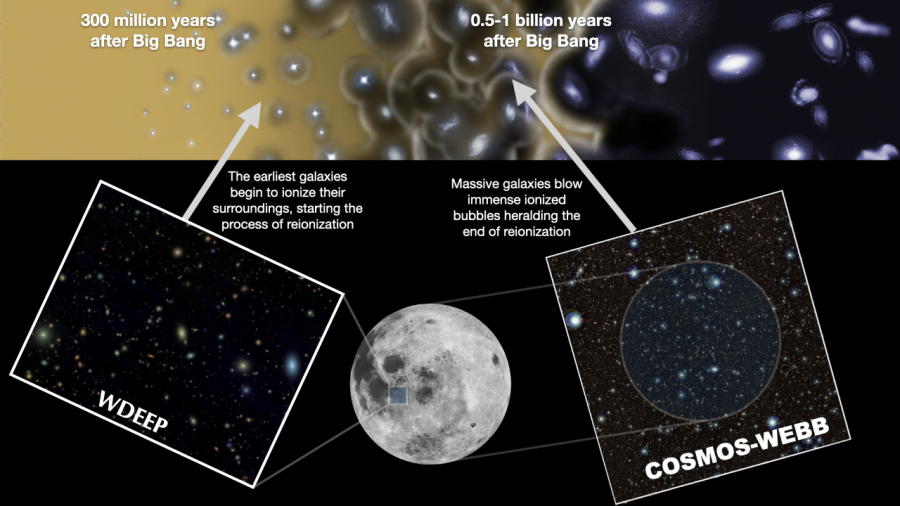UT astronomy department to use NASA telescope for new projects
April 29, 2021
UT astronomy professors, postdoctoral fellows and graduate students will work on projects using NASA’s forthcoming James Webb Space Telescope, which will be the most powerful telescope in space, during its first year.
The telescope is scheduled to launch Oct. 31 and will be operational by mid-2022, according to the McDonald Observatory’s website. The telescope’s development began in 1996, and according to NASA’s website, will be “the premier observatory of the next decade.” UT astronomers will collectively have about 500 hours of telescope time. They will work on two projects: COSMOS-Webb and the Webb Deep Extragalactic Exploratory Public Survey.
The goal of COSMOS-Webb, led by astronomy assistant professor’s Caitlin Casey of UT and Jeyhan Kartaltepe of the Rochester Institute of Technology, is to study the history of the universe in its first billion years, Casey said.
“We wanted to go both deep — seeing some of the most distant galaxies at the edge of the universe — but also wide,” Casey said. “We wanted to cover an area larger than the size of the moon in the sky.”
Casey said half the leadership of the COSMOS-Webb team is based at UT. The project is anticipated to find around one million galaxies, which will be studied by the team. She said the team will use facilities at UT’s McDonald Observatory to compare data with images gathered from the Hobby-Eberly Telescope Dark Energy Experiment.
Steven Finkelstein, an UT associate astronomy professor, Casey Papovich, an astronomy professor from Texas A&M University, and Nor Pirzkal, an astronomer from the Space Telescope Science Institute, will lead the Web Deep Survey. Finkelstein said the survey is designed to deeply observe a point in the sky to discover some of the earliest galaxies formed.
Finkelstein said that while both COSMOS-Webb and the survey are trying to study distant galaxies, they differ in the strategies they’ll use.
“(The survey is) looking for the faintest, earliest galaxies,” Finkelstein said. “COSMOS-Webb is looking for sort of the most massive galaxies at that time in the universe.”
Micaela Bagley, a postdoctoral fellow working in Finkelstein’s research group, said UT’s main role in the survey will be to work with the project’s data and analyze it.
“(UT will) be involved at the level of cleaning and processing data, but also really interpreting the data and drawing scientific conclusions from it,” Bagley said. “We bring a lot of expertise which is very exciting.”
Editor’s Note: This article first appeared in the April 27 issue of The Daily Texan.












